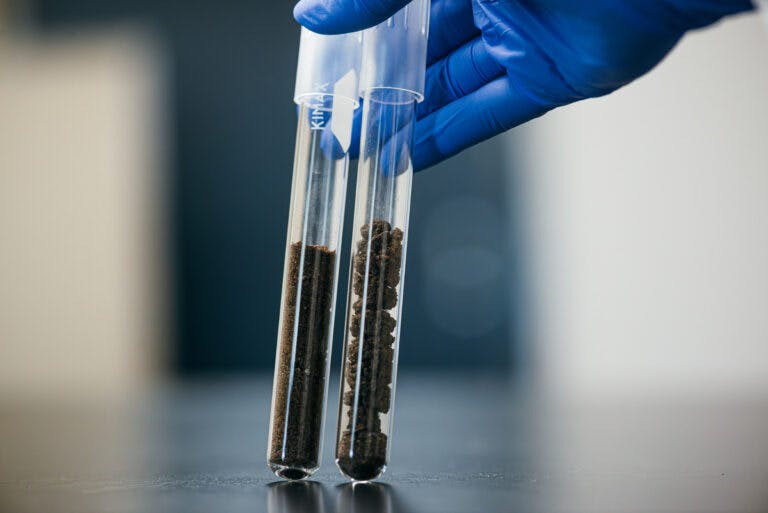
Let’s Meet The Urgency Of Climate Change With A Climate Of Innovation In Agriculture
Every day, the reports grow more alarming.
From another crop lost to flooding in India, to sudden frost in the US, to searing heat in Africa. In every corner of the world, climate impacts such as extreme weather events, loss of biodiversity, degrading ecosystems, and water scarcity will worsen as the planet warms. Without action, the changing climate will affect food availability and hinder access to food.
Has climate change forced an equally dramatic change in agriculture’s approach to it?
Agriculture and food systems are a huge part of the climate solution, but they must transform through inclusive, multisectoral approaches that reduce greenhouse gas emissions and build resilience and adaptive capability.
The urgency for all of us to act is certainly upon us. With a little inspiration from the ocean and a whole lot of innovation from science, today’s biostimulants are protecting plants and securing global food supplies against severe weather events as never before.
The shift from biotic to abiotic stress innovations
The dangers of biotic stressors like disease and pest control have always been known and, frankly, well supported with innovative products.
But the fact of the matter is climate change, and the increased abiotic stress that comes from it causes significantly more harvest loss. Increasingly unfavourable growing conditions have contributed to farmers losing between 30-70% of their harvests[1].
Given this, we should expect a dramatic shift as more focus and resources gravitate toward sustainable biostimulant solutions like those being perfected at Acadian Plant Health™. Especially since abiotic stressors can negatively impact the biotic stress of pathogens, insects, and weeds themselves.

What’s possible begins with what we can imagine
In the intertidal waters of the North Atlantic, Ascophyllum nodosum seaweed survives, indeed thrives, in some of the harshest growing conditions on earth. Its resilience to rapid fluctuations inspired our scientists to extract its elements in their most active form and apply these resilient qualities to biostimulant technologies for agriculture on land.
Biostimulants are a category of product that work with the crops’ natural physiological processes to enhance or benefit nutrient uptake, nutrient use efficiency, tolerance to abiotic stress, and protecting crop quality and yield.
By turning on a plant’s defenses we are able to provide protection against abiotic stressors for the full potential of the crop. These innovative products can help address some of our greatest challenges so that we can all create a sustainable future.
With regards to climate change specifically, Acadian biostimulants play an active role in helping plants mitigate stress conditions. They have shown benefits such as significantly enhanced root growth, nutrient efficiency, and increased soil microbial activity – all of which protect the potential yield of the crop.
With the UN prediction of zero agricultural soil remaining by 2050 at the same time the population meets 10 billion with an extra 56% food demand – things need to change.

The truth is our approach to consumerism and agriculture has been laser-focused on more productivity without a thought for the implications. Sustainability is a relatively new idea for industry, but agriculture can go a step further. What if we could use an industry to reverse the impact of greenhouse gas emissions by redressing the balance? This is where regenerative agriculture comes into play. The idea here is to use a combination of technologies that leverage the mass scale of agriculture. Seems to be farfetched but not so far when you consider technologies like Acadians Ascophyllum nodosum already contribute to such a system. We know that the seaweed absorbs atmospheric carbon as it grows and when we coppice it at harvest, we generate carbon absorbing annual regrowth. Take this to the next phase where the crop root biomass increase in turn increases soil carbon to help maintain soil health which in turn improves plant health to improve photosynthetic capacity – we have a product cycle that potentially reduces atmospheric carbon emissions.
As agriculture scales up to meet the new food demand then so do the benefits of regenerative agriculture. Now is the time to challenge ourselves to Sea Beyond. To see a future where performance and sustainability are commonplace and regenerative technologies come together to create a new global agriculture that takes and gives back to the planet in a win/win relationship.
Let’s meet the urgency of climate change with a climate of innovation
Few industries are as dependent on climate and weather as agriculture. This means as long as climate change continues, poorer harvests, poorer quality, and higher costs can be expected. According to Scientific American, climate-fueled temperature increases generated $27 billion in insurance payouts between 1991 and 2017.
But since knowingly turning a blind eye is no longer a luxury we can afford, what if we met the urgency of the moment with inspired thinking and innovation? The kind that refuses to see performance and sustainability as separate solitudes but unites them as one. For the benefit of plants and planet.
This secure, habitable future is within our grasp, if only we choose to Sea Beyond.
[1] Buchanan, B.B., Gruissem, W. and Jones, R.L. (2000) Biochemistry and molecular biology of plants. American Society of Plant Physiology, Rockville, Maryland.